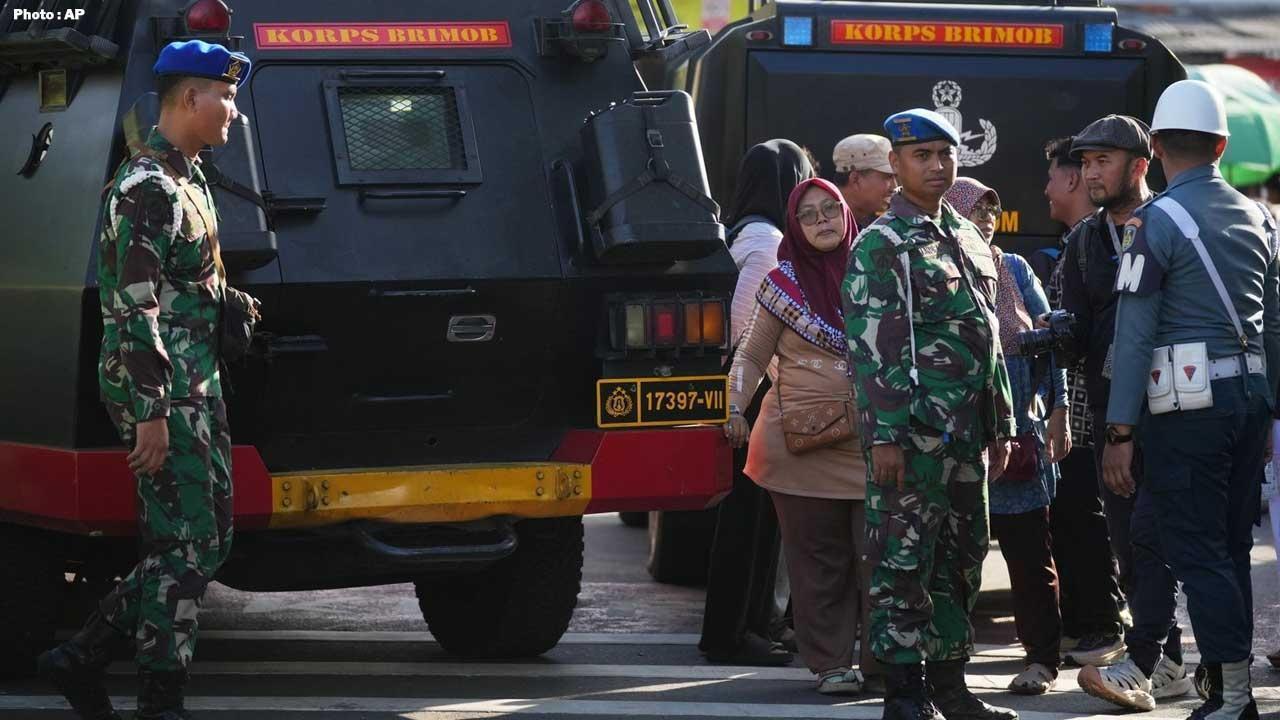
Join 10k+ people to get notified about new posts, news and tips.
Do not worry we don't spam!

Post by : Anis Farhan
Adventure travel has evolved from a niche market to a mainstream phenomenon. Activities like e-biking through rugged landscapes, canyoning in dramatic gorges, glacier trekking, and backcountry diving have become accessible to a broader audience. However, this surge introduces heightened responsibilities; the diverse nature of travelers, remote conditions, and evolving regulation demand careful attention to safety.
In 2025, both the industry and governmental bodies are responding with new frameworks, elevated certification standards, and accelerated innovation in gear. A recent revamp of regulations in a coastal region of India illustrates this shift—water-sport operators must now comply with international safety standards, train staff adequately, and conduct thorough location assessments prior to launching new excursions.
This evolution underscores a crucial point: emphasis on safety in adventure travel goes beyond mere thrills; it encompasses liability, professionalism, the reliability of gear, and ensuring travelers are prepared. Therefore, for content creators, guides, and operators, grasping these changes is vital.
In 2025, many regions are tightening regulation for adventure providers. Activities such as rafting, paragliding, canyoning, and mountaineering will necessitate licensed guides, updated rescue protocols, and operator licenses aligning with international standards. Travelers must verify that their adventure provider is certified under the current framework instead of assuming past compliance is adequate.
The emphasis on safety now emphasizes dynamic evaluations over static checklists. Before engaging in activities like zip-lining or paragliding, operators must assess locations for terrain, weather fluctuations, rescue accessibility, satellite connectivity, and local emergency resources. This shift is essential as many adventures are now taking place in previously unexplored or inadequately regulated areas.
Analogous to regular vehicle inspections, high-risk adventure gear is coming under increased scrutiny. Equipment such as harnesses, ropes, helmets, drones, diving kits, e-bikes, and flotation devices must now adhere to stricter maintenance schedules, thorough inspections, and traceability records. Operators neglecting these responsibilities risk losing their licenses or facing legal consequences.
No longer varying significantly from one company to another, the latest 2025 guidelines stress that operators must provide clear, documented briefings, emergency protocols, and hazard disclosures. As a traveler, detailed insights about risks, equipment maintenance, and the protocol for leaving the activity safely should now be part of your journey.
The soaring expenses for rescues, remote retrieval operations, and specialized gear have made insurance indispensable. Operators must maintain valid liability coverage, while in certain areas, travelers may need to acknowledge inherent risks through detailed waiver forms. Proof of travel insurance for remote adventures might also be necessary.
Wearable devices are evolving from mere fitness trackers to crucial safety instruments. Equipment like heart-rate monitors, GPS trackers with SOS features, satellite communicators for secluded areas, and real-time weather alerts are becoming standard for serious adventurers. Connectivity and alerts can be life-saving when trekking in remote areas.
The era of bulky gear has passed. Today’s gear includes cutting-edge lightweight helmets with impact sensors, flotation devices equipped with GPS signals, automatic avalanche airbags, and flexible but robust protective layers optimized for activities like biking or climbing. The trend shifts towards minimal but highly protective equipment.
In less accessible terrains, conventional mobile phones may fall short. The 2025 gear essentials include handheld satellite messengers, trackers for group inventories, GPS devices with offline maps, and personal locator beacons (PLBs) that can signal for rescue assistance—especially relevant for independent multi-day adventures.
E-biking is surging in popularity, bringing new risks such as powerful motors and extended distances. Safety gear now encompasses upgraded helmets (sometimes featuring rear-impact sensors), multi-terrain tires, emergency repair kits tuned for remote use, and appropriate lighting systems for night biking.
For aquatic pursuits: inflatable rescue vests, hydro-SOS beacons, ready-to-use anchor kits for canyoning. In high-altitude adventures: portable oxygen monitors, emergency overnight gear, avalanche transceivers, and altitude-appropriate first aid kits. The principle is clear: gear must be tailored to the specific environmental conditions.
Before finalizing your booking, ensure the operator is certified, has updated equipment, openly shares safety protocols, and can provide records of past incidents. Research the local terrain, seasonal weather patterns, and verify the adequacy of local rescue systems.
Don’t assume you’ll “figure things out.” For activities like canyoning or glacier trekking, ask for a detailed gear list, confirm technical specifications, and ensure you’re familiar with the equipment's operation. Check the last inspection dates for high-risk items, such as flotation devices, harnesses, and ropes.
Know how to request assistance, the closest medical facilities, the availability of satellite coverage, and understand your operator’s evacuation strategies. Even when traveling independently, share your schedule, utilize a personal locator or emergency beacon, and set up regular check-ins with someone at home.
Adventure is more than just equipment. Confirm that you meet the fitness requirements, participate in safety briefings (or ask for one if one isn’t provided), comprehend exit strategies, and be candid about your comfort levels. At any point, if you feel uncertain—stop, seek clarification, or choose to withdraw.
Confirm that your travel insurance covers your specific activities, as many standard policies may exclude “extreme sports.” Carry both digital and physical copies of health documents, emergency contacts, operator licenses, and gear inspection records, if available. Consider obtaining local rescue or emergency evacuation insurance when in remote areas.
Alongside specialized gear, ensure you include basic safety items: a headlamp, whistle, first-aid kit, multi-tool, portable charger, weather-appropriate clothing, GPS tracking device or satellite communicator, and copies of critical documents. Tailor your packing based on your chosen activity, environment, and local rules.
Increased occurrences of extreme weather, melting ice, sudden storms, and unstable terrain are now common. Adventure travelers must include “climate risk” in their considerations: flexible itineraries, weather monitoring, emergency shelter preparation, and avoidance of flagged risk zones are essential planning aspects.
As adventures lead to uncharted territories, medical and rescue infrastructures may fall behind. Always anticipate longer evacuation times while preparing for self-management, and plan your gear, skills, and insurance accordingly.
Ironically, increased reliance on technology introduces new risks: dead batteries, lack of coverage, faulty alerts, and technical glitches. Always carry backup tools (both low-tech and high-tech), spare power sources, offline maps, and maintain manual navigation skills. Don’t depend solely on a single device.
More operators in the field lead to greater variability in standards. While guidelines exist, enforcement is often weak. Travelers should ensure operators provide thorough training, maintain gear standards, and disclose local incident histories instead of assuming safety.
Risks like altitude sickness, dehydration, insect-borne diseases, water quality issues, and exposure to environmental elements are heightened in remote settings. Ensure you’re well-prepared: obtain necessary vaccinations, arrange health checks, allow acclimatization time, and have hydration strategies in place.
Consider a rafting adventure launching in a remote gorge in India. In 2025, new safety regulations mandate certified rafting guides, pre-trip briefings that include hazard maps, GPS tracking for rafts, effective communication channels with rescue teams, and gear inspection documentation for safety equipment. From the traveler’s viewpoint, this means enhanced security, coupled with an emphasis on transparency and thorough documentation.
As a traveler, inquiries should include: “Can I review your latest gear inspection certificate?” or “What’s your plan if the river conditions become dangerous?” These considerations reflect the new safety expectations.
Adventure travel in 2025 promises increased access, unprecedented terrains, and more diverse experiences—but comes with elevated stakes. Safety is integral to planning, choice of operators, and mindset.
When embarking on wild adventures—be it canyoning in South Asia, glacier trekking in the Alps, or e-biking in secluded highlands—be mindful of updated guidelines, invest in new gear, ask critical questions, and prepare for the unexpected. The outcome? A richer, safer, and more sustainable adventure experience founded on awareness, respect for nature, and a well-constructed safety plan.
Adventure is on the horizon—but only when anchored in prudence and preparation.










Paramount+ to Stream PBR’s 'Unleash the Beast' in New Five-Year Deal
Paramount+ will stream PBR’s 'Unleash the Beast' across the U.S. starting this December under a five

Zohran Mamdani Clinches NYC Mayoral Seat as Victory Speech Blends Politics and Bollywood
Zohran Mamdani won New York City's mayoral race, becoming the city's first Muslim and South Asian ma

India Wins First Women’s World Cup 2025 Title
India lifts its maiden Women’s World Cup 2025 title! Harmanpreet Kaur’s team stuns South Africa in a

Manuel Frederick, 1972 Olympic Bronze Goalkeeper, Dies at 78
Manuel Frederick, a member of India’s 1972 Olympic bronze hockey team, has died in Bengaluru at 78 a

Muhammad Hamza Raja Wins IFBB Pro Card Puts Pakistan & UAE on Global Stage
Pakistani bodybuilder Muhammad Hamza Raja earns IFBB Pro Card in Czech Republic, showcasing Dubai’s

Shreyas Iyer’s Recovery Underway After Spleen Laceration in Sydney ODI
Shreyas Iyer is recovering after a spleen laceration sustained while taking a catch in the Sydney OD